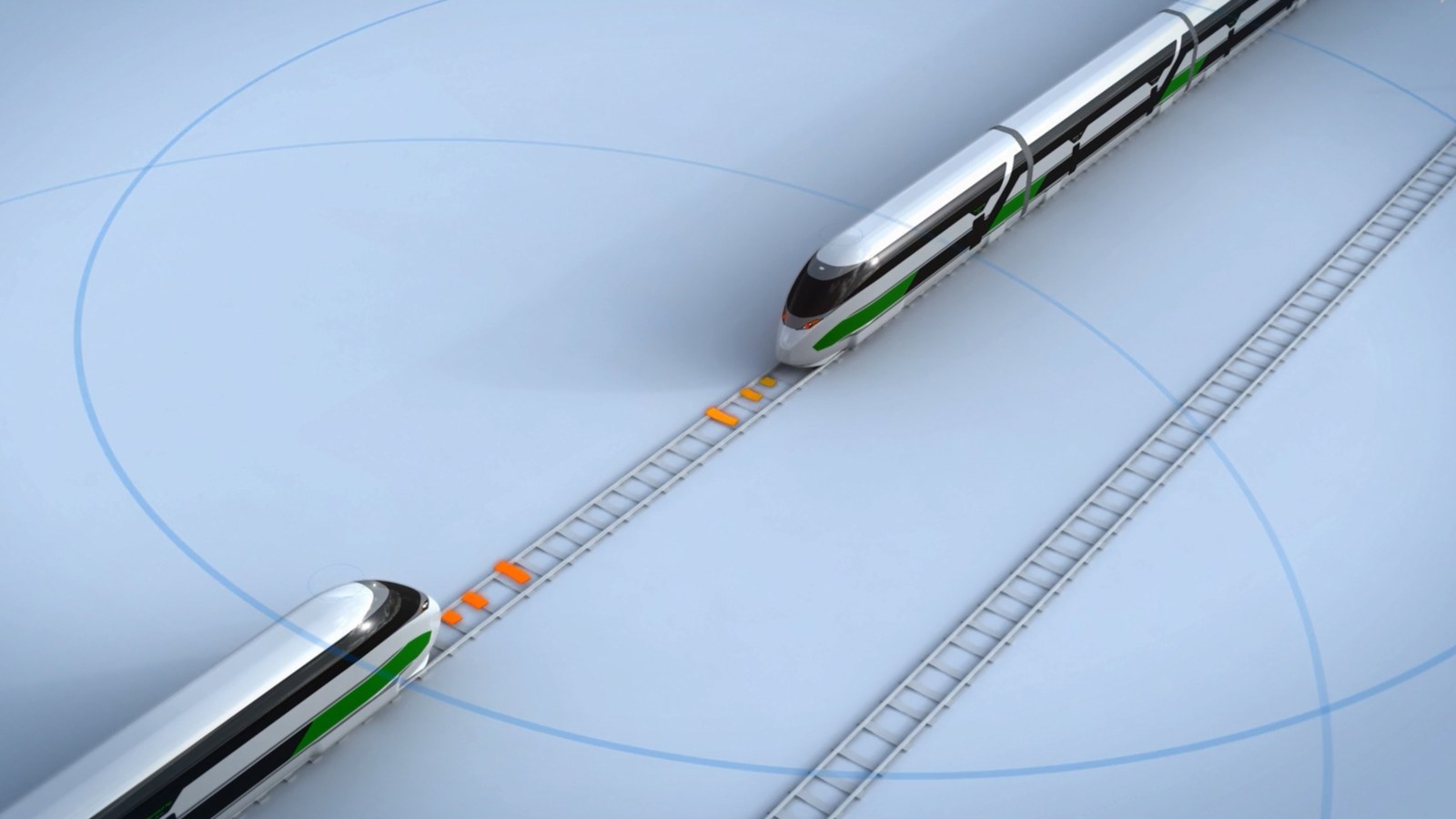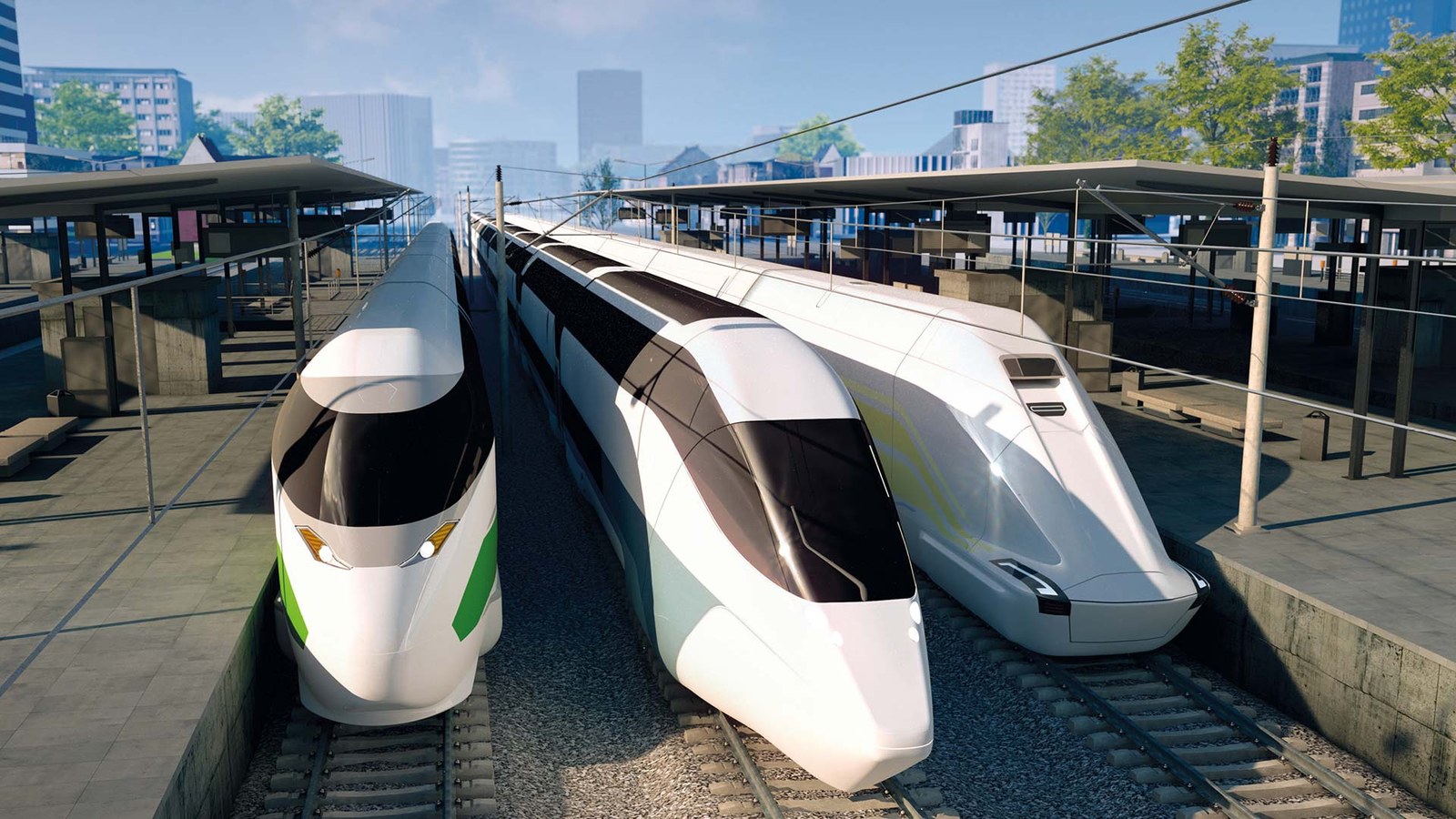Rethinking old technologies – Slip coaching and virtual coupling


- Slip coaching enables more frequent services, shorter travel times and new direct rail connections.
- Different train segments are virtually coupled between junction stations. Only some of the train's coaches stop at intermediate stations, while the main train passes through at full speed.
- Modern control and safety technology combined with new communications, positioning and sensor systems make the concept both viable and attractive.
- Focus: Transport, digitalisation, trains, rail transport
Moving a great deal of our transport from the roads onto the rails will benefit the climate in future. Over the last 10 years, the German Aerospace Center (Deutsches Zentrum für Luft- und Raumfahrt; DLR) has been working on new ideas to make rail transport more attractive for carrying both passengers and freight. This means that, in the long term, if more people travel by train, the train services at individual stations will need to be expanded. However, infrastructure growth has been proven to be expensive and time consuming. So what other options are there?
Separate, and yet together
For an improved service with trains at more regular intervals, shorter travel times and additional direct connections, the answer may lie in what is known as slip coaching. DLR has been working on the concept for a trendsetting high-speed train, the 'Next Generation Train' (NGT), since 2007. The ideas developed by DLR for these new trains will give them a number of advantages: they will be faster, more comfortable and more flexible; taking people and their luggage, as well as goods, to their destinations in a safer manner and using fewer resources. "One operational and technical innovation on the NGT is 'dynamic virtual coupling'," says Michael Mönsters from the DLR Institute of Transportation Systems. "This function enables the virtual coupling of trains in motion."
A virtually coupled train is not mechanically connected, but rather its multiple segments travel at a defined spatial distance along the track. In order for this to work, the train segments must continuously communicate with each other. They exchange information on speed, for example, a vital parameter for regulating the distance between the different parts of the train.
From the past into the future – Slip coaching
"If you combine virtual coupling and dynamic sharing with the slip coaching of old, which has its origins in 20th century railway operations, the new type of slip coaching that we are working on emerges," says Mönsters. In historic slip coaching, coaches were separated from the end of the train and brought to a halt by an attendant at the next intermediate station. Meanwhile the rest of the train would continue its journey at the same speed without having to stop. But slip coaching did not last in the long run, mainly due to the extra work involved and some serious safety concerns during the braking procedure.
With modern control and safety technology and the use of new communications, positioning and sensor systems, researchers at DLR are now breathing new life into the old concept. To do so, they have taken the conventional approach of slip coaching and enhanced it with dynamic virtual coupling and an electric drive for the individual car units. "In the slip coaching process of the future, several train segments will be virtually coupled between hub stations," explains Mönsters. "Only some of the train's coaches will stop at intermediate stations, while the main train can drive through them at full speed."
Taking a closer look at the concept we see that the trains consist of several short, individually driven units that are virtually coupled to one another. They depart together from a hub station. When an intermediate station is reached, the last unit releases from the virtual coupling and slows down to eventually stop at the nearest platform on the main track. When all passengers have alighted the train and new ones have boarded, the unit accelerates back up to the cruising speed and the next train picks it up by means of virtual coupling.
In 2021, DLR researchers demonstrated the basic feasibility of this new type of slip coaching in a simulation. "The concept could be a step towards achieving the goal of moving road traffic to the railway, because it enables a fast, regular and more attractive service thanks to the direct connections created," summarises Mönsters. "The next step, soon to be taken, will be to start testing virtual coupling using a real prototype."
InnoTrans 2022 – Online demonstrator for virtual coupling and slip coaching
To show the principle of virtual coupling and slip coaching DLR scientists have built an interactive online demonstrator. The software consists of a graphical user interface and gives users the opportunity to change numerous parameters and view their effects on operations directly. The demonstrator also shows the expected effects on a railway system operated with virtual coupling and slip coaching. Experience the online demonstrator live at the DLR stand (Hall 2.2, Stand 460) at InnoTrans from 20 to 23 September 2022 in Berlin.
